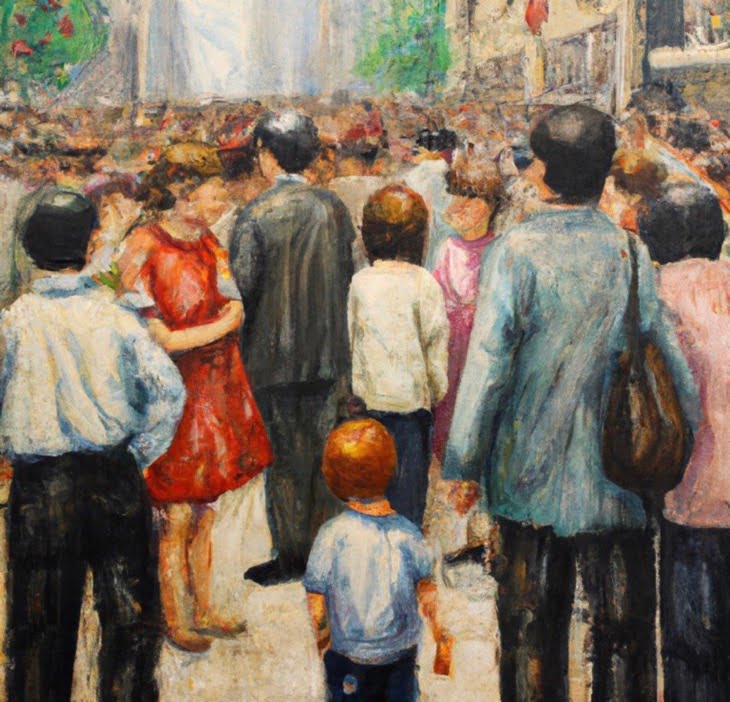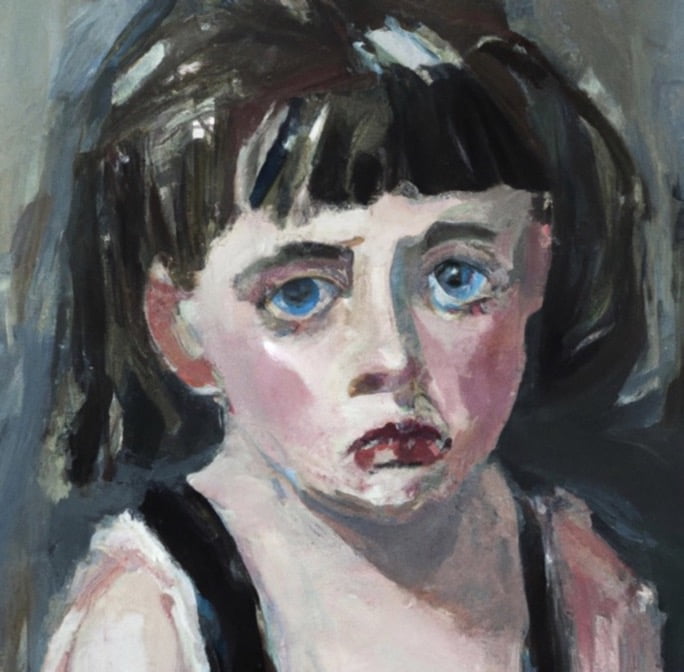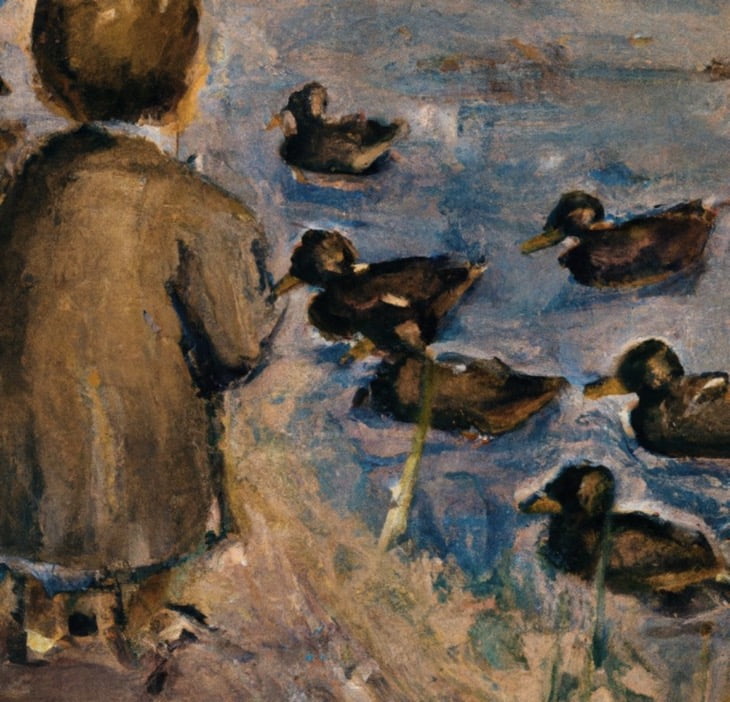Table of Contents
Does your attachment experience explain your BPD, Quiet BPD or High-Functioning BPD?
In recent years, a lot of publications and resources emerged on the topic of attachment theories, and the relationship between BPD and attachment. You may already be familiar with these concepts. On this page, we will review some of the basic premises of attachment theories, how they may relate to your push-pull behaviours and explain various BPD symptoms.
We cannot paint everyone with Borderline Personality Disorder (BPD) with a single brushstroke. Even people may carry the same diagnostic label, their unique life experiences and innate temperaments will create different coping styles and, therefore, symptom profiles. Combining an understanding of attachment theories with that of varying BPD types will allow us to gain better insights into your struggles and help you on the path towards healing.

“It is as if my life were magically run by two electric currents: joyous positive and despairing negative–which ever is running at the moment dominates my life, floods it.”
―
Attachment Styles and Adaptation Strategies
Our parents’ response to our attachment-seeking behaviours, especially during the first few years of our lives, ultimately shape how we see and experience the world. Suppose as infants, we have consistent attachment interactions with someone loving, attuned and nurturing, who can mirror our emotions back to us accurately, and do not ask us to carry their distress. In that case, we will be able to develop a sense of safety and trust. If our parent/ parents were able to respond to our calls for feeding and comfort most of the time, we would internalise the message that the world is a friendly place; we trust that someone will be there for us when we are in need. Eventually, we will also be able to internalise that calming presence as a part of ourselves, and therefore be able to regulate our own emotions even in times of stress. If, in contrast, the message that we were given was that the world was unsafe and that people could not be relied upon, it would affect our ability to withstand uncertainty in life. This means that even in relationships, we struggle with grey areas. Since we feel unable to sit with any ambiguity in communication, we may demand constant reassurance, quickly flip into black-or-white thinking, feel the impulse to end everything or plunge into despair whenever conflict arises.
To see the link between BPD and attachment, we must first understand attachment theory. Attachment theory was originally developed by John Bowlby (1907 – 1990), who started by observing how infants react to being separated from their parents. Bowlby saw the behavioural attachment system as a biologically based system oriented towards seeking protection and maintaining closeness to the attachment figure, especially in times of threat and danger. The child has to develop patterns of defence and regulation that adapt to the context they were given.
Bowlby’s theory was later put into experiments by Mary Ainsworth (1913 – 1999), who came up with the famous “Strange Situation” experiment. In this investigation series, 12-month-old infants and their parents are brought to the laboratory and separated from and reunited with one another. The researchers identified four distinct patterns of reactions, as detailed below.
“Securely attached’ children become upset when the parent leaves the room, but, when he or she returns, they actively seek the parent and are easily comforted by him or her.
“Anxious- resistant” children (also called ‘anxious- ambivalent’. For simplicity, we may just call them ‘anxious’) are incredibly distressed when separated from their mothers. Importantly, even after they are reunited with their parents, these children have a difficult time being soothed and relating to their parents. They show conflicting behaviours that signal although they want to be comforted, they also want to “punish” the parent for leaving.
“Avoidant’ children do not appear distressed by the separation, and, upon reunion, they avoid contact with their parents. They refuse to look at their parents or hug them, and may just turn their attention to toys and objects on the floor.
‘Disorganised attachment’ was later added as the fourth category. These children seem confused and hesitate to seek that comfort from their parents. They display highly traumatised— freezing or contradictory behaviours both when their parent leaves the room and on their return.
Ainsworth’s work provided the first empirical foundation of individual differences in infant attachment patterns. More importantly, researchers later find that, since adult intimate relationships are attachment relationships, we can see the same kinds of individual differences and patterns as we would have observed in our infant-caregiver relationships.
Psychologists found that without conscious intervention, we tend to stick with our childhood attachment styles. If we have an anxious attachment pattern, we might become attached and clingy; if we have an avoidant attachment pattern, we tend to cut off to protect ourselves, trust ourselves instead of the world. This is the pathway via which BPD and attachment patterns are correlated.

“And what if—what are you if the people who are supposed to love you can leave you like you’re nothing?”
―
Attachment Styles, Adult Relationships and Borderline Personality Disorder
Contemporary attachment researchers have roughly categorised adult attachment patterns through where they fall on two dimensions: Anxiety and Avoidance (Brennan, Clark, & Shaver,1998). Research on these patterns give validity to the Adult Attachment Interview (AAI), and the results from these interviews are reviewed as follow:
Secure attachment:
Individuals who are low on both anxiety and avoidance dimensions are said to be securely attached. They have positive views for themselves and others and believe that they are worthy of care and that others can be counted on to provide support when needed.
They usually grew up in a supportive environment where parents were responsive to their needs. People who are securely attached are generally comfortable with being vulnerable, they are open and warm in a social situation. When needed, they are okay with asking for help and letting others support them. They are usually confident and have a positive outlook on life, are comfortable with closeness, and seek physical and/or emotional intimacy with little fear of abandonment.
Securely attached individuals are consistent and reliable in their behaviours toward their partner.
Anxious-preoccupied (Anxious) attachment:
People who are high on the anxiety dimension are more likely to have a negative view of themselves, resulting from internalising their attachment figure’s unavailability and interpreting it as rejection. If you have this attachment style, conscious or not, your upbringing has caused you to believe you were unworthy of love and care. You crave intimacy and approval, yet fear rejection and abandonment.
Sometimes referred to as “insecure-ambivalent,” you have developed this form of attachment likely because your parents have been inconsistent with their emotional availability and responses to you. Maybe at times, they are nurturing, caring, and attentive. Other times, or as their mood changes, they flip to being cold, rejecting, detached or even cruel. You never know what to expect. This results in a hyper-vigilant psyche— at every moment you feel like you have to watch out for any signs of change in the relationship dynamics. You have internalised the message, albeit unconsciously, that you can only be loved if you pay very, very close attention to the person who can potentially give you love and attention.
As an anxious child, you sought constant assurance, approval and attention from others, and as adults, you may demand these from your partners. You have a highly intense need for contact and connection and come across as dependent or clingy. You struggle with the idea of object constancy and experience constant fear of abandonment. You are highly aware of the smallest hint that others may be angry, upset or pulling back from you. When you feel insecure, you cannot help but react with fear, anger, and a desperate search for contact, validation and connection.
You tend to struggle more with maladaptive dependency (as opposed to counter-dependency). You may have more pleasing behaviours, sacrifice your own needs for that of others, and find it difficult to trust your ability to endure or enjoy solitude.
You may relate more to the descriptions of ‘classic’ BPD, where the fear of abandonment and instability in interpersonal relationships are core features. You quickly drop into despair or become enraged even with the slightest change in social nuances. This fear of being left alone, and therefore, annihilated, is at the heart of the BPD trauma.
If your efforts to seek contact have been repeatedly shamed and traumatising, you might also have decided to stop seeking out attachment, keep to yourself, but you continue to feel a deep longing, emotional loneliness and shame that come from your attachment trauma. In this case, you may identify more with the description of Quiet BPD.

– George Elliot
Dismissive-avoidant (avoidant) attachment:
Individuals high on the avoidance dimension, on the other hand, have developed negative views of others. Through your experience, you learned that people could not be counted on, and you have to rely excessively, if not solely, on yourself.
You may think of and describe your childhood vaguely and inconsistently, and tend to minimise or downplay painful feelings. You may not remember much of your childhood and feel uncomfortable speaking about it. Normalising, intellectualising and rationalising painful events are your core coping mechanisms.
Also referred to as “insecure-avoidant,” children usually develop this attachment style when their primary caregivers are not responsive to or reject their needs. You learned to pull away emotionally as a way to avoid feelings of rejection. Unlike anxious-preoccupied children, avoidant children are almost excessively independent. If you have adopted this survival strategy, you may continue with this pattern even as adults, and see yourself as being completely self-reliant, hide your real self and avoid close bonds. You may use becoming distant as a coping strategy when conflicts arise.
You eventually become uncomfortable with emotional openness and may even deny your need for intimacy. You place a high value on independence and autonomy and worry about being overwhelmed, engulfed, and controlled. You avoid being emotionally open with others for fear of them coming too close. You may recognise the value of relationships and have a strong desire for you, but have difficulty trusting others.
If you have this attachment style, you may relate more to the Quiet BPD or High-functioning BPD descriptions. In Quiet BPD, you turn your pain inward and hurt yourself rather than lash out at others. In High-functioning BPD, you shield your conscious and unconscious anxieties and relational wound with a facade of normalcy. In both cases, your deepest pain remains buried. Both your yearnings and fears remain unseen — not just to others but even yourself. While you may seem to function ‘normally’ in your day to day life, inside you feel numb, as though you are running on an auto-pilot. The emptiness and loneliness wear on your conscience day after day, and however much you try to suppress it, from time to time you feel like you are on the verge of breaking.
Disorganised attachment:
Children who have developed this style have been exposed to prolonged abuse and/or neglect. Primary caregivers are the people children must turn to as a source of comfort and support. In a situation involving abuse, these primary caregivers are also a source of hurt; this creates enormous inner conflicts in the child, causing them to have to use mechanisms like splitting and dissociation to cope. If you have been abused in this way, you may grow up to become someone who fears intimacy within relationships but also fear the loneliness of not having close relationships. If your attachment style is disorganised, you may relate to others in a chaotic, unpredictable way, or even perpetuate a vicious abusive cycle. The symptoms you exhibit is primarily related to Complex PTSD. Complex PTSD is caused by ‘cumulative developmental trauma’ (CDT), also known as early relational trauma (Isobel et al., 2017). It happens when you were trapped in a situation where traumatic events repeatedly happened, cumulatively, over a period of time in which you had no route to escape (Sar, 2011).
Many of the symptoms of Complex PTSD overlap with BPD; With Complex PTSD, You may also have symptoms along the ‘”traumatic-dissociative” dimension (TDD)’ (Farina, Liotti and Imperatori 2019). For example, you may experience a ‘loss of continuity with your experience, unexplained memory loss, or randomly ‘losing time’. You may have depersonalisation— feeling disconnected with your own body, or derealisation— a sudden sense of disconnection with the world, like you are ‘floating above’ it. You may also experience identity confusion, and even occasionally lose control of your body.
*

I must be careful not to be trapped in the past. That is when I forget my songs.
Mick Jagger
All children have no choice but to lean on their caregivers to survive. When there has been emotional trauma, instability in attachment relationships, neglect or abuse, you had to come up with ways to adapt to the situation. Therefore, your survival strategies are not inherently ‘bad’, or pathological. It is only when they are rigidly held and no longer fit the new contexts and relationships in adulthood, that they become ‘maladaptive’ and ‘disordered’. For instance, if your parents were inconsistent, violent and not to be trusted, withdrawal and hyper-vigilance might be absolutely necessary for you. But it could gradually become a liability if the same approach is used in your adult relationships, even when there is a genuine loving presence around. This is the mechanism by which a once-necessary, desperate method to survive becomes a ‘mental disorder’.
To complicate matters, many of us have mixed attachment patterns— so we may swing between various behavioural patterns, from distancing to clinging, controlling, or devaluing the relationship. Or, we glorify our partner one day to devalue them the next day. We swing from attaching intensely to distancing ourselves and armouring up heavily. This split partly explains the confusing relating pattern we see in those with BPD, Quiet BPD, High-functioning BPD, and Complex PTSD.
It is also not always easy to gauge someone else’s attachment style. For example, it is extremely common for people to be avoidant in their behaviour manifestations but struggles with anxious attachment on the inside. Because they cannot handle the fear of abandonment and rejection, they may withdraw or end the relationship prematurely to protect themselves. Someone may have behaviours such as stop texting, set up a wall, remain silent, or withdraw into their own world, and appear to be ‘avoidant’, but inside, they are hurting from a premature assumption that they have been left by the other person.
BPD and attachment are linked. Neural pathways developed from childhood traumatic experiences help shape how we respond to others, and we often find ourselves repeating the same behaviours and patterns throughout our lives. This is not meant to place all blame on parents for the types of relationships you have as adults or to suggest that all is therefore hopeless. Although parents play an essential role in setting that foundation, we as an adult have the ability to create changes for ourselves and our behaviours.
By developing a better understanding of how our early childhood experiences have shaped our attachment style and its connection to our present style of interactions, we can improve our relationships. This awareness can then help us move towards developing more securely attached relationships, and heal from the painful symptoms of Borderline personality disorder. Combining deep insights with time, you can certainly turn the situation around.
Imi Lo is a consultant and published author with extensive and international experience in mental health and psychotherapy. Her books Emotional Sensitivity and Intensity and The Gift of Intensity are available worldwide and in multiple languages. Imi has two Master’s degrees; one in Mental Health and one in Buddhist Studies. She works holistically, combining psychological insights with Eastern and Western philosophies such as Buddhism and Stoicism.
